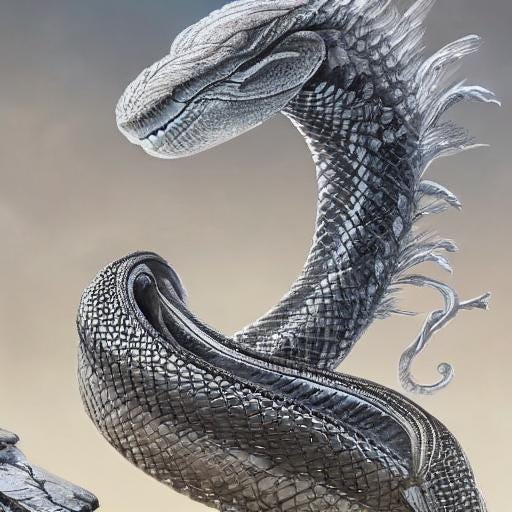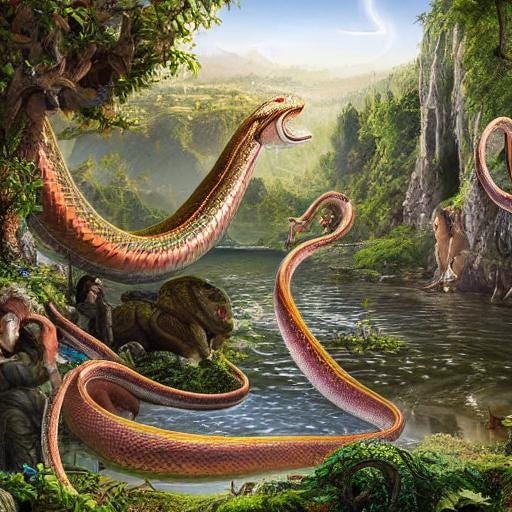The relationship between snakes and the territory that is now Portugal and its people is so ancient that has become a myth.
The greeks used to call what is now the portuguese territory Ophiussa, the Land of Serpents1, its inhabitants were the Ophis or Saefes, the Dragani and the Cempsi. This name was given to them because it is said they worshiped snakes.
As a reminder of this ancient culture, this region not only has a great number of legends and myths concerning snakes (both benevolent and evil), but also monuments like the Pedra de Serpe in Gondomil located in Galicia, Spain, in which a flying snake was sculpted into stone.
Serpents continued to be present in the imagination of the portuguese people, long after the fall of the civilizations who worshipped them, the Verdugo Barbudo being an example of this. This creature is a portuguese mythical animal, a snake of great size, with the distinctive feature of having in one version white body hair, in another white hair, or even a white beard. They would live in house roofs, houses or castles ruins. I did not find any specific tale about these creatures, but they would inspire fear, maybe fear from attic or roof noises, since those were some of the places they prefered to live in. The Verdugo Barbado myth is more common in the Beira Alta Region.
These beings may be confused with a type of Moira Encantada, another mythical creature, who sometimes presents itself as a snake with long or braided hair. Serpa, a portuguese town, is known for its snakes (the mythical ones). Such is its fame that even its coat of arms has a snake pictured there. There are several legends, there is even one story about a snake that acts as a protector. One of its legends is the following2:
In the Quinta do Fidalgo lived a noble woman named Ana, who had been victim of an enchantment forcing her to live her life as a snake, but as an old reminder of her past life she kept her hair. She used to roam around an old figtree and each year, in St John the Baptist Day, she would apear together with a great treasure that would be given to the traveler who could take the spell out of her.
Another portuguese creature that presents itself as a snake is the Hirã. It was believed that the seventh daughter of a couple would always turn into a Hirã. This being would have a head disproportionately bigger than its body, that would be slender. At its 12th birthday the Hirã would turn itself into a snake and went to live in the Ocean.
It is indeed an extraordinary connection that Portugal has with serpents, but what amazes me the most is how tradition can keep the history of a people alive through thousands of years.
UGIDOS, Gonzalo, Enigmas y conspiraciones, El lado oscuro de la historia de España, La Esfera de los Libros, S.L. 2017, ISNB-9788499709949
https://www.portugalnummapa.com/lenda-da-serpente-de-serpa/





